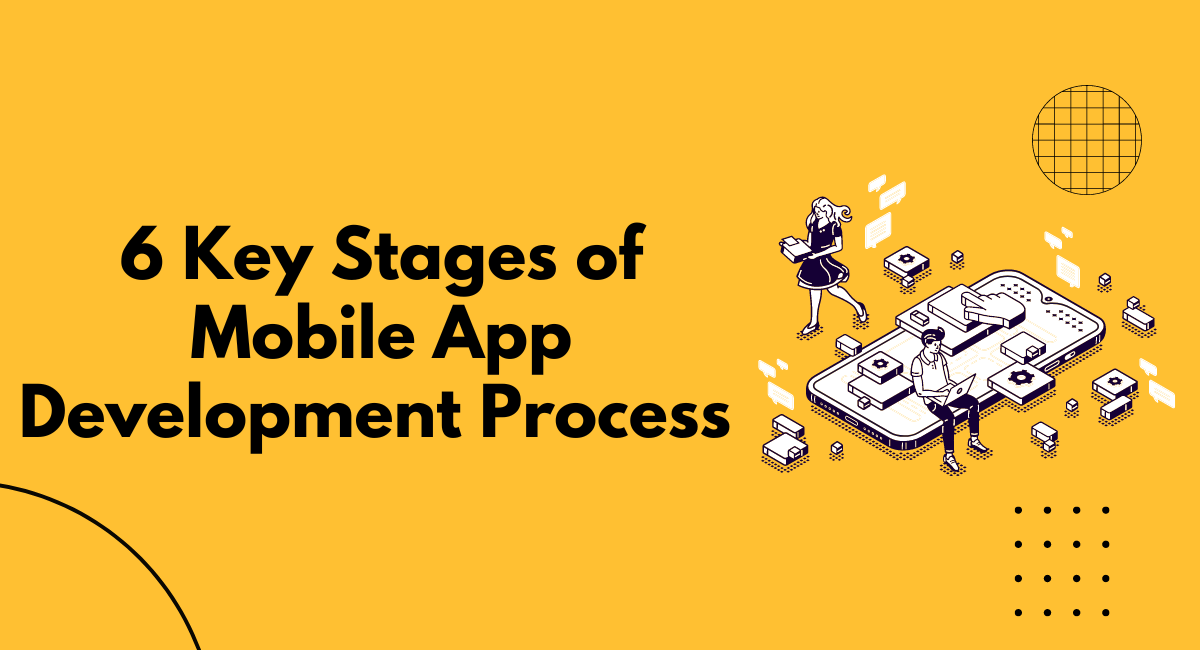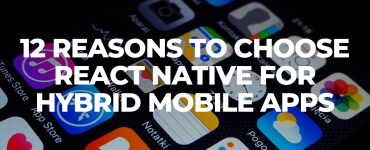
6 Key Stages of Mobile App Development Process
The mobile app market is developing quickly in this quick-paced environment. Finally, mobile marketing tactics are becoming more and more competitive. Because of this, mobile app developers should exercise caution while choosing their development strategy. In a challenging setting, they must keep the app visible.


With the growing use of smartphones and tablets, mobile application development has become one of the most common processes for producing software. Although numerous companies are making an effort to profit from this trend, others are unsure of how to properly design an app.
Here are detailed instructions on the six essential steps of the mobile app development process that will ensure the success of your app design.
Stage 1 Strategy and market research comprises
The primary effort in the mobile app development process is turning your understanding into a sizable program. This might be given more prominence throughout the mobility protocol. It’s crucial to be aware that each app has a different set of objectives, thus the mobility strategy must be adjusted to fit each stage of the workflow for developing an app.
In the initial phase, you must:
- Identify the app’s users
- Investigation of the opposition
- Set up the app’s objectives and aims.
- Pick a mobile platform for your application.
Once you’ve settled on a concept and identified your app’s target market with precision, you can search the app stores for competitors, check how many people have downloaded them, peruse their features, read user reviews, and more.
Your goals can be to figure out your budget and scope, develop a USP, define the precise features your app needs, determine how machine learning and augmented reality/virtual reality (AR/VR) can be utilized to promote your app, determine the launch date, and other things. When you see the next steps in the mobile app development process, this will become much evident.
Stage 2: Planning and Analysis
Once the goals of the application have been established, create a project plan. This requires presenting and organizing workable application mandates into deliverable landmarks. Create a minimum viable product and emphasize it for the initial takeoff if you are low on time, money, or resources.
Common phone platforms like iOS and Android frequently make use of a variety of cutting-edge technological packages. You’ll need software engineers on board who are experts in either iOS or Android if you want to create an application that runs on both platforms.
Choose the most creative name for your app possible because, like domain names, mobile app names must be unique inside each app store. Make sure your app’s name isn’t already being used by doing extensive research on each app store.
Stage 3 – UI/UX design
It’s time to actually start working on the idea and visualization of the functioning of the app and its user interface now that you have your target audience, budget, features, and timetable planned out. The design phase of the creation of a mobile app can be approached in a number of different ways. Storyboarding entails outlining your user’s journey as they discover various elements of your app and move through it.
The APIs you require, if you require push notification services, the types of analytics tools, user interaction platforms, and database types you’ll require, among other things, will all need to be determined. At this point, you will also be able to decide whether you need to start from scratch or whether you can base your app on the architecture of an already-existing app. Making a prototype is the last step in the design phase of the mobile app development process.
Marvel and InVision are just two of the tools you may use to create a high-fidelity prototype that can be checked for UI/UX bugs and glitches. Although the prototype is hardly a minimal viable product, it must be constructed with the utmost care because it will serve as the framework for the development of your software.
Stage 4: Developing a Mobile App
The coding and implementation of your software are both a part of this process. In the stages of making a mobile app, you have to do a lot of different things, like set up a good environment for development, write different sections of code, do some preliminary testing, and make a mobile app that can be installed and tested.
One development project will require both programmings and setting up the development environment. There are normally three parts to any software product: an application programming interface (API), a user interface (UI), and the back end. Since development usually happens in stages, you can expect your developer to give you builds that you can run on your device right away.
Stage 5 – Testing
Each stage of the development cycle includes a quality assurance. Various testing methodologies are used in this step. Functional and performance tests help to guarantee that everything functions as it should, that the app is quick, and that it can handle the load. User experience is the main focus of usability tests. To test how everything renders on different screen sizes, you also need to test the application on a variety of devices and device simulators.
Stage 6 – Deployment and Support
To submit the app to the Google Play Store or the Apple App Store, you must have a developer account. The preparation of metadata, such as the app’s title, description, category, keywords, launch icon, and app store screenshots, is necessary before an app is published in the app store.
After submission, the app will undergo review. Each app store has its own review process, so it could take a few days or longer for your app to be available.





